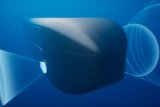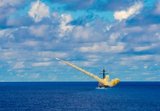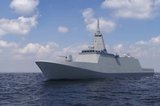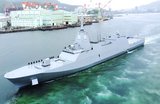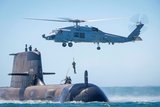Thales awarded Malaysian LCS radar, sonar contract
The Second Generation Patrol Vessel (SGPV) Littoral Combat Ships (LCS) being built for the Royal Malaysian Navy will be equipped with the Thales Smart-S Mk2 naval surveillance radar system and Combined Active/Passive Towed Array Sonar (CAPTAS-2) towed sonar system. Thales announced the signing of a Letter of Award with system integrator, Contraves Advanced Devices, on 18 February.
The SGPV LCS are being built by Boustead Naval Shipyard in Malaysia. Thales will supply six Smart-S Mk2 radar systems for the vessels and six CAPTAS-2 systems.
The first two Smart-S radars will be built and tested by Thales in Hengelo, the Netherlands, with the first delivery to take place within the next few years. The remaining four systems will be assembled and tested by Contraves in Malaysia, using Thales components and know-how.
Smart-S Mk2 is a medium to long range air and surface surveillance radar that operates in E/F band (S-band), has full 3D coverage, up to 70 degrees in elevation and two operational modes with 250/150 kilometre range respectively. The system is designed to provide medium to long range situational awareness and target designation in complex environments such as the littoral.
The CAPTAS-2 is part of the CAPTAS1 family of active Variable Depth Sonar. The system is designed to perform against quiet submarines, enabling surface platforms to carry out all Anti-Submarine Warfare missions such as escort, prosecution, area sanitisation and own force protection.
More from Naval Warfare
-
![US Navy advances with the Harpoon Service Life Extension Programme]()
US Navy advances with the Harpoon Service Life Extension Programme
The US Navy plans to improve Harpoon’s anti-ship and land attack capabilities by equipping the missiles with sensors and technologies required for succeeding in future battlespace.
-
![Mitsubishi eyes future with Australia’s Mogami selection]()
Mitsubishi eyes future with Australia’s Mogami selection
With Australia’s selection of the Mogami-class for Project Sea 3000, Mitsubishi is investigating local production in the next decade as potential export opportunities emerge.
-
![Hanwha wins Australian government approval to increase its stake in Austal]()
Hanwha wins Australian government approval to increase its stake in Austal
The contract would mean the two shipbuilders can collaborate strategically and enhance shipbuilding capabilities in Western Australia.
-
![Royal Australian Navy sizes up modernisation plans for new and existing capabilities]()
Royal Australian Navy sizes up modernisation plans for new and existing capabilities
The Australian navy is pushing ahead with its efforts to modernise its workforce and capabilities while balancing risky submarine upgrades, ageing Collins-class boats and a shrinking minehunter fleet. Head of navy capability RAdm Stephen Hughes updated Shephard on the force’s progress.








